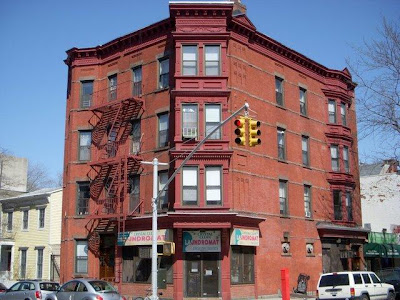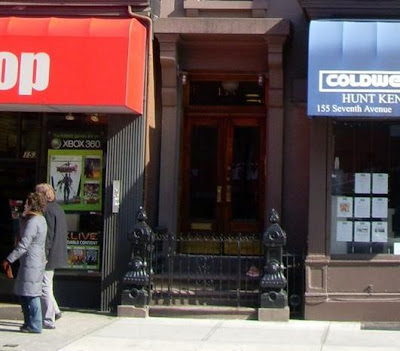 Brooklyn Daily Eagle, June 2, 1894, p. 4 ("Real Estate Market")
Brooklyn Daily Eagle, June 2, 1894, p. 4 ("Real Estate Market")Sure enough, the photographs confirm that three buildings matching the Eagle description are standing in Union Street today. They are very handsome buildings, of brick with brownstone trim, over a first floor of rusticated brownstone, with all cornices and ironwork intact:
Just below in the same Eagle article, there is a description of three identical buildings, attributed to the same builder, Thomas J. Smith, in the north side of President Street, at the same distance east of 6th Avenue:
Consulting the photographs once again, we found three more of these same buildings in President Street, matching their counterparts through the block in Union Street:
The President Street buildings match the ones in Union Street in every detail, except that one in President Street has lost the original ironwork.
Since the Eagle descriptions match the existing structures, we feel we can safely attribute all six buildings to Thomas J. Smith, owner/builder, 1894. Smith undoubtedly purchased all six lots at once and then erected the buildings simultaneously. Most such building groups are erected in linear rows, but occasionally one finds this kind of discontinuous "through-the-block" configuration.




































